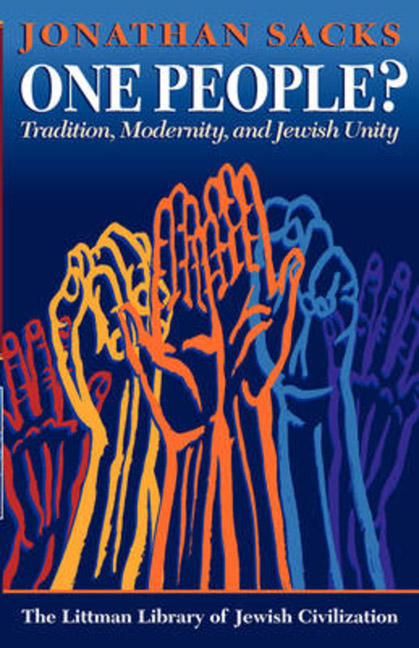Book contents
- Frontmatter
- Dedication
- Preface
- Contents
- Note on Transliteration and Place Names
- Abbreviations
- 1 The Crisis of Contemporary Jewish Thought
- 2 The Birth of the Adjectival Jew
- 3 Orthodoxy, History, and Culture
- 4 Orthodoxy and Jewish Peoplehood
- 5 Tradition and Diversity
- 6 Inclusivism
- 7 A Collision of Consciousness
- 8 Schism?
- 9 The Future of a People
- Bibliography
- Index
6 - Inclusivism
- Frontmatter
- Dedication
- Preface
- Contents
- Note on Transliteration and Place Names
- Abbreviations
- 1 The Crisis of Contemporary Jewish Thought
- 2 The Birth of the Adjectival Jew
- 3 Orthodoxy, History, and Culture
- 4 Orthodoxy and Jewish Peoplehood
- 5 Tradition and Diversity
- 6 Inclusivism
- 7 A Collision of Consciousness
- 8 Schism?
- 9 The Future of a People
- Bibliography
- Index
Summary
WE now come to the most sensitive stage of the argument. I have argued that Jewish tradition contains the resources to prevent Orthodoxy's disintegration into conflicting sects. But does it have the resources to span the quite different and vastly greater divide between Orthodoxy and non-Orthodoxy? Here schism-the division of Jewry into two peoples-is a real possibility. Can diversity coexist with unity even across the abyss of disagreement on fundamentals of faith and practice?
Let us first specify the terms in which we are to address the question. Firstly, it applies to all groups that lie outside Orthodoxy-to the various forms of liberal Judaism (Reform, Conservative, and Reconstructionist), and equally to the several modes of secular Jewish identity, from diaspora Jewish ethnicity to Israeli secular nationalism. The contours of the problem differ in each case, so in this and the next chapter we shall consider only the most difficult: the relationship between Orthodoxy and Reform, in particular radical Reform as it has developed in America. If this problem is insoluble, it does not imply that the others are. But if some resolution can be found here, it should be readily applicable elsewhere.
Secondly, what kind of solution do we seek? The Orthodox-Reform rift is readily bridged if certain conditions are fulfilled. Reform Jews might decide, in the present climate of the search for tradition, to become Orthodox Jews. Orthodoxy might discover a hitherto unsuspected possibility of halakhic pluralism. Reform Judaism, less dramatically, might reformulate its doctrinal position in ways that could allow its accommodation within an Orthodoxy broadly conceived. More modestly still, some shared procedure might be arrived at, agreeable to both sides, for at least the most basic halakhic determinants of personal status: conversion and divorce. A sufficient structure of Jewish unity might be built on the narrow base of consensus on who is a Jew and who may marry whom.
Practical solutions of this nature need constantly to be articulated, in he faith that at some stage some formula or development will emerge that will generate substantive convergence towards a common conception of Jewish peoplehood. That faith is not wishful thinking. It is in large measure what it is to have faith in keneset yisrael, the covenantal community; and faith in the covenantal community is an essential element of Jewish messianic belief.
- Type
- Chapter
- Information
- One People?Tradition, Modernity, and Jewish Unity, pp. 116 - 140Publisher: Liverpool University PressPrint publication year: 1993



